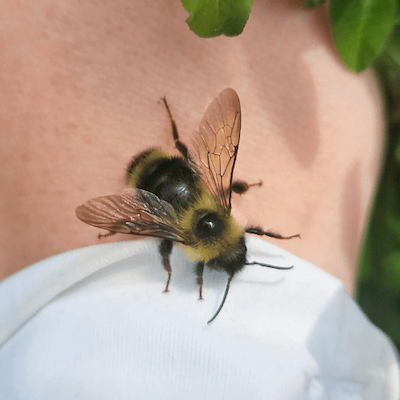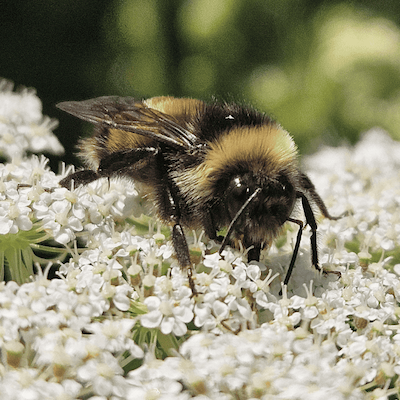If you’re not familiar, cuckoo bumble bees are the stealthy imposters of the bee world. Instead of establishing their own nests, cuckoo queens sneak into the nests of other bumble species, overthrow the reigning queen, and lay their own eggs. The host workers then raise the cuckoo’s young instead of the original queens’. It’s a wild and fascinating strategy, and a reminder of just how complex the natural world is.
Unfortunately, cuckoo bumble bees like the Fernald’s that I giddily found face some serious threats. Bee populations have been declining nation-wide due to habitat loss, pesticide use, climate change, and disease. But cuckoos are especially vulnerable, because their survival depends entirely on the health of their host species. When those bumble bee populations decline, so too do the cuckoos’.
But there’s still hope. Every time we plant native flowers, reduce our pesticide use, support pollinator conservation efforts, or protect natural areas, we’re helping not just the common bees, but the rare and specialized ones too. The fact that the Fernald’s Cuckoo is still out there, quietly going about its stealthy, secretive life, means there’s still time to make a difference.
There’s something truly magical about seeing a species for the first time, especially one as elusive and mysterious as the Fernald’s Cuckoo. It’s a reminder that no matter how much time you’ve spent in the field, or how many bees you’ve ID’d, there’s always something exciting buzzing around the corner. And with every patch of habitat protected or native plant added to the landscape, we create more chances for these rare encounters — for bees to thrive, and for us to keep being amazed by them.
Want to get involved? Check out our community science programs here: https://wildlifepreservation.ca/bumble-bee-community-science/







